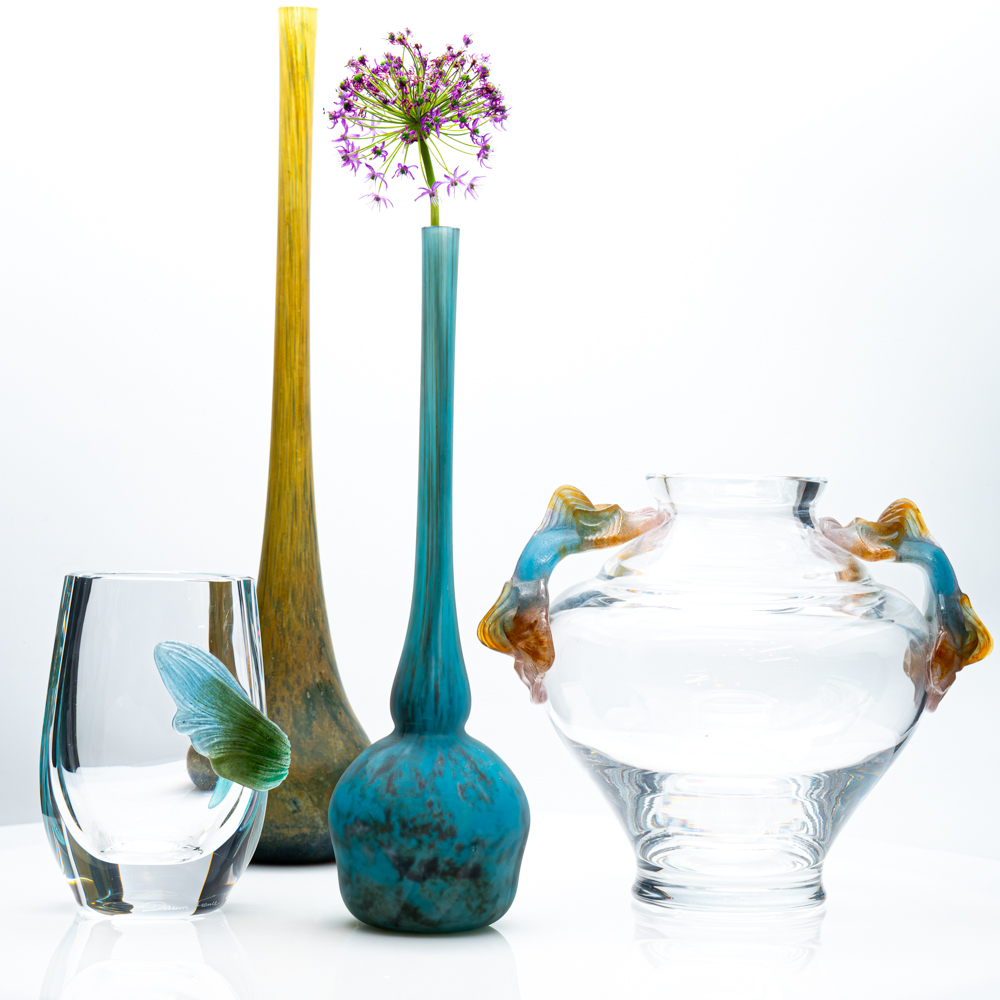This exquisite set multi-coloured hand-crafted “Pâte du Verre” Art Deco is a statement piece in the room. Two Pieces Signed “Daum”, and two pieces unsigned “Delatte”, circa 1930-1935.
Two colorless vases from Delatte, mat etched glass with moss green and aqua blue with grey and blue/green powder melts, and two vases with frosted brown, aqua blue, salmon and clear glass, with a beautiful feather arrangement.
In its style, the set is French Art Deco, circa 1930-1935.
This set is unique and specially selected, a one-of-a-kind set from Daum and Dellate.
Dimensions
1 Vase Daum (signed): H 8,3″ (21 cm); D 10,2″ (26 cm)
2. Bottle neck vase Delatte: H 18,5″ (47 cm); D 5,3″ (13,5 cm)
3. Bottle neck vase Delatte: H 13,4″ (34 cm)
4. Vase Daum (signed): H 6,5″(16,5 cm); D 4,5″ (11,5 cm).
Daum
Daum the legendary glassmaker, master in Nancy (France) founded in 1878 by Jean Daum (1825-1885). Daum is one of the only crystal manufacturers to employ the ‘pâte de verre’ (glass paste) process for art glass and crystal sculptures
The company has kept alive for more than a century a love relationship with the greatest artists of its time, giving their work of art a second life of crystal and colors. From the Ecole de Nancy, from Art Nouveau to Art Decorative, from Majorelle to Dali, Arman and Hilton McConnico, Daum has not missed any of the magic rendez-vous of the artistic creation and modern savoir-faire, which has always renewed the alliance of art and art craft.
André Delattte himself was born in Châtenois, France, in 1887. He first founded his glass producing company in 1921, close to Nancy. He fabricated engraved glass objects of the kind which was also sold by Daum and Muller Frères. Delatte’s cameo vases and bolws incorporated two to three layers of glass, with motives made visible through acid and only little polishing was done afterwards. The designs were common to be solid and clean. Although the motives themselves were not innovative and mostly depicted landscapes and florals, they were attractive to the eye. The company was shut down in 1938, because of the financial crisis at the time.




















